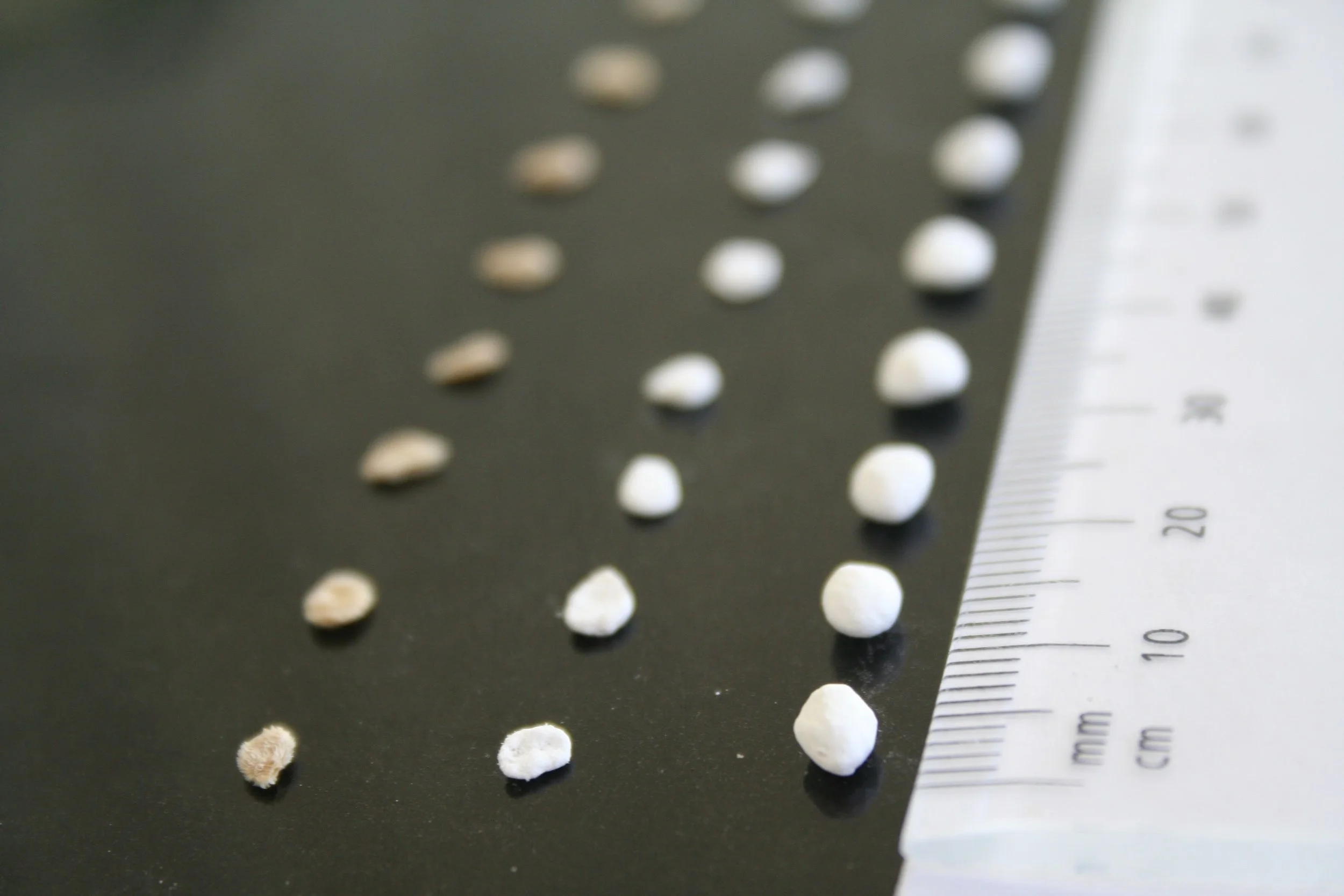By Simone Pedrini
According to the review/opinion paper "Seed Coating: Science or marketing spin?", published on the Journal Trends in Plant Sciences, seed coating has the potential to significantly improve the overall efficiency of seed based restoration.
Seed coating, in a nutshell, consists of the application of external material around the natural coat of the seed. This technology has been developed mainly in the crop and vegetable industry. Why seed coating is done? Well here are the good, and not so good reasons:
- improving seed handling, by standardizing seed shape and size, ultimately reducing seed wastage during sowing.
- delivery of active ingredients, that could improve seed protection and germination, seedling emergence, growth and survival, and eventually, yield.
- advantages in marketing through an enhanced seed aesthetic that can lead to higher priced seed .
According to the authors, most of the technological capability for seed enhancement is held by private seed and agrochemical companies. This know-how is usually a trade secret and rarely if ever disclosed. Such a situation limits the ability to objectively evaluate claims through independent research institutes. This then hampers further development of the technology, especially in evaluating the potential ecological impact of seed coat delivered pesticides (eg. neonicotinoids) and testing whether in fact claims about seed germination promoters and growth regulators are borne out in field programs.
Key Figure: Seed-Coating Ingredients, Equipment, and Coat Type
Seed coating has been applied mostly to crop and vegetable species, with very little interest by the private sector in native seed enhancements.
However, in the past decade or so, the scientific community has begun evaluating seed coating as a way to overcome physiological and ecological impediments that have, so far, limited the success of seed based restoration.
Research teams across the globe, such as the Centre for Mine Site Restoration in Australia, Oregon State University and Chicago Botanic Garden in the United States and the NASSTEC network in Europe, are intensively evaluation seed technology solutions as a mean to improve seed-based restoration efficiency.
For native seed, probably the best way to accelerate the research process and reach positive outcomes and major breakthroughs is through a closer engagement with the private seed technology industries. But such a collaboration might raises a number of issues:
Are those private enterprises willing to collaborate and will there be the academic freedom to publish outcomes of value to wild lands restoration?
Is access to the potentially "rich" market of ecological restoration, enough of an incentive for those companies to invest in native seed research and share their technological know-how with scientific institutions?
Are those companies the kind of players that should be involved in restoration, or their profit-first and foremost focus is eventually going to corrupt the social and moral principles that underpin ecological restoration?
INSR would like to know your opinion on this review article. If you're interested in taking part in this discussion, consider joining the INSR forum hosted on the new SER website. If you are not a member of SER, you can still join the discussion by creating a visitor account. Click on the link to learn how. (HOW TO CONTRIBUTE IN THE INSR DISCUSSION FORUM)
For more information on this issue, you can find the article at http://www.cell.com/trends/plant-science/fulltext/S1360-1385(16)30172-8

